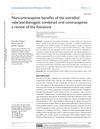Estradiol
Estradiol, a form of estrogen, is a hormone present in both men and women, playing vital roles in reproductive health, bone density, mood regulation, and cardiovascular function. While predominantly associated with female biology due to its higher concentrations and key roles in female reproductive functions and characteristics, estradiol also contributes to important physiological processes in men, including fertility, libido, and bone health.
Estradiol aids in hair regrowth primarily by binding to estrogen receptors in scalp and hair follicles, influencing the hair growth cycle, and promoting the transition from resting to growth phases. It enhances hair follicle cell proliferation through modulation of growth factors like the Wnt/β-catenin pathway and offers protective effects against cell death, potentially shielding hair from chemotherapy-induced damage. Additionally, estradiol promotes angiogenesis, improving scalp blood flow and nutrient delivery to follicles, and exerts anti-inflammatory properties that create a healthier scalp environment. Its role in regulating sebum production further supports a conducive setting for hair growth, collectively making estradiol a promising avenue for hair loss treatment.
Recent studies have illuminated the protective and therapeutic potentials of estradiol in the context of hair health. In the treatment of androgenic alopecia, or male pattern baldness, estradiol-rich plasma has been found to enhance hair density more effectively than regular plasma, hinting at its valuable role in hair loss therapies. Investigations into 17α-estradiol, a variant of the hormone that is less associated with feminization, suggest potential neuroprotective and therapeutic applications that could extend to treating hair loss. Additionally, studies on the application of 17α-Estradiol solutions have demonstrated effectiveness in improving hair density and thickness in cases of female pattern hair loss, underscoring its safety and efficacy as a treatment option.
Users of estradiol have a wide range of viewpoints regarding the role of estradiol in hair loss treatment. Transgender individuals, for example, have shared their journeys with estradiol as part of broader hormone therapy regimens, noting its impact on hair regrowth alongside other treatments such as minoxidil and spironolactone. Conversations around alfatradiol, another form of estradiol, reveal mixed results, highlighting the ongoing need for research into its dosage and efficacy. Members of the community have also voiced concerns over potential side effects, including elevated estradiol levels and gynecomastia, particularly when estradiol is used in conjunction with other hair loss treatments.
Research
20 / 1000+ resultsresearch Testosterone Modulation of Seizure Susceptibility Is Mediated by Neurosteroids 3α-Androstanediol and 17β-Estradiol
research Puberty in Boys: Correlation of Plasma Levels of Gonadotropins, Androgens, Estrogens, and Progestins
research Estrus, Ovulation, And Serum Progesterone, Estradiol, And LH Concentrations In Mares After An Increased Photoperiod During Winter
research 17β-Estradiol and ICI-182780 Regulate the Hair Follicle Cycle in Mice Through an Estrogen Receptor-α Pathway
research Cellular Actions of Testosterone in Vascular Cells: Mechanism Independent of Aromatization to Estradiol
research Differential Suppression of Testosterone and Estradiol in Hirsute Women With the Superactive Gonadotropin-Releasing Hormone Agonist Leuprolide
research Hormonal Treatment of Transgender Women with Oral Estradiol
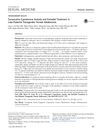
research Consecutive Cyproterone Acetate and Estradiol Treatment in Late-Pubertal Transgender Female Adolescents
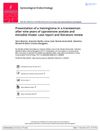
research Presentation of a Meningioma in a Transwoman After Nine Years of Cyproterone Acetate and Estradiol Intake: Case Report and Literature Review
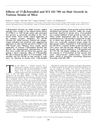
research Effects of 17-β-Estradiol and ICI 182 780 on Hair Growth in Various Strains of Mice
research Prevention and Treatment of Experimental Prostate Cancer in Lobund-Wistar Rats: Effects of Estradiol, Dihydrotestosterone, and Castration
research Estrus, Ovulation, and Serum Progesterone, Estradiol, and LH Concentrations in Mares After an Increased Photoperiod During Winter
research In Vitro Effects of Testosterone, Dihydrotestosterone, and Estradiol on Cell Growth of Human Hair Bulb Papilla Cells and Hair Root Sheath Fibroblasts
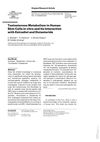
research Testosterone Metabolism in Human Skin Cells In Vitro and Its Interaction with Estradiol and Dutasteride
research Weak Correlations Between Serum and Cerebrospinal Fluid Levels of Estradiol, Progesterone, and Testosterone in Males
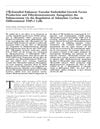
research 17β-Estradiol Enhances Vascular Endothelial Growth Factor Production and Dihydrotestosterone Antagonizes the Enhancement via the Regulation of Adenylate Cyclase in Differentiated THP-1 Cells
research Studies on the Persistence of Estradiol Benzoate and Nortestosterone Decanoate in Hair of Cattle Following Treatment with Growth Promoters, Determined by Ultra-High-Performance Liquid Chromatography–Tandem Mass Spectrometry
